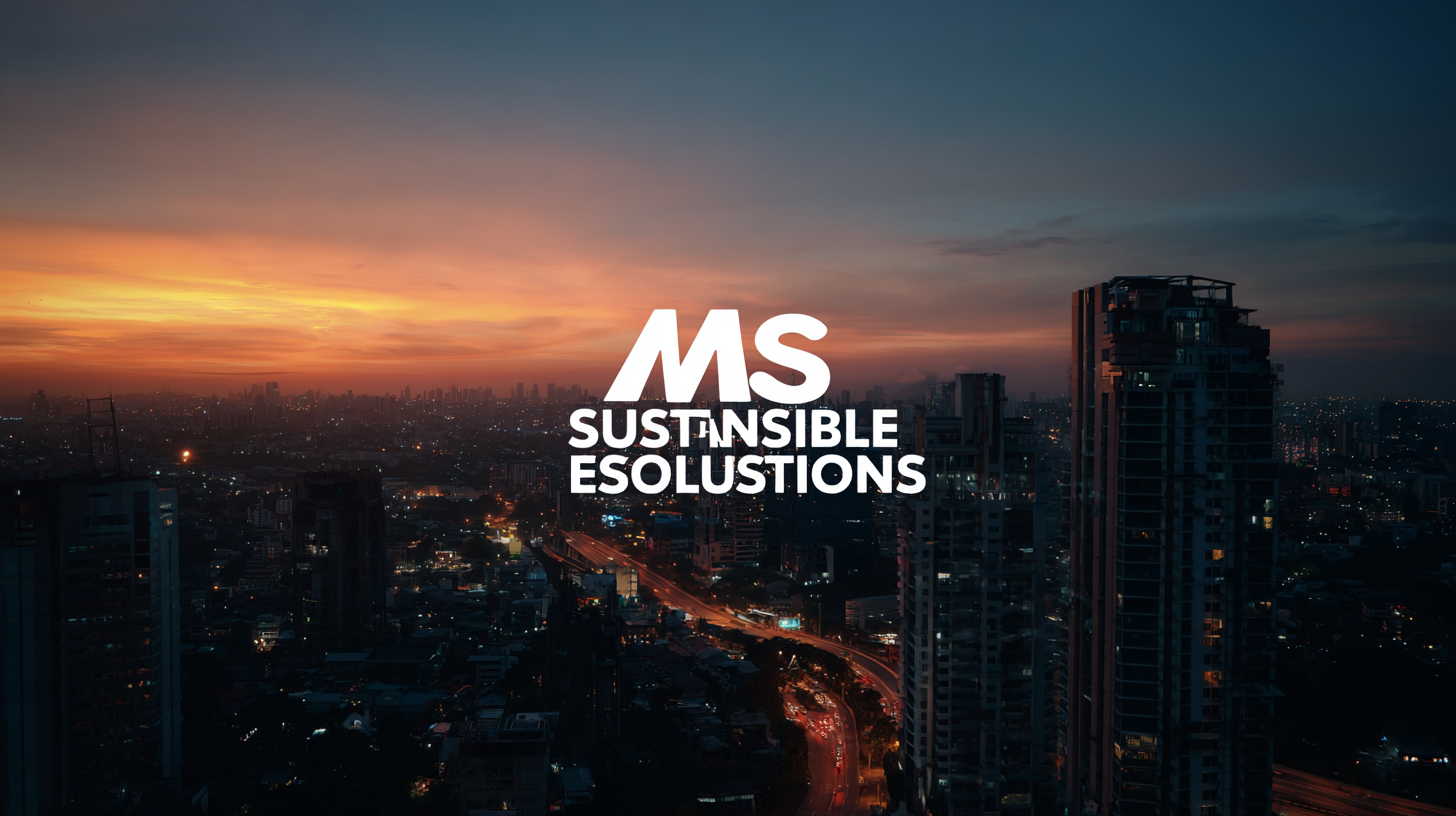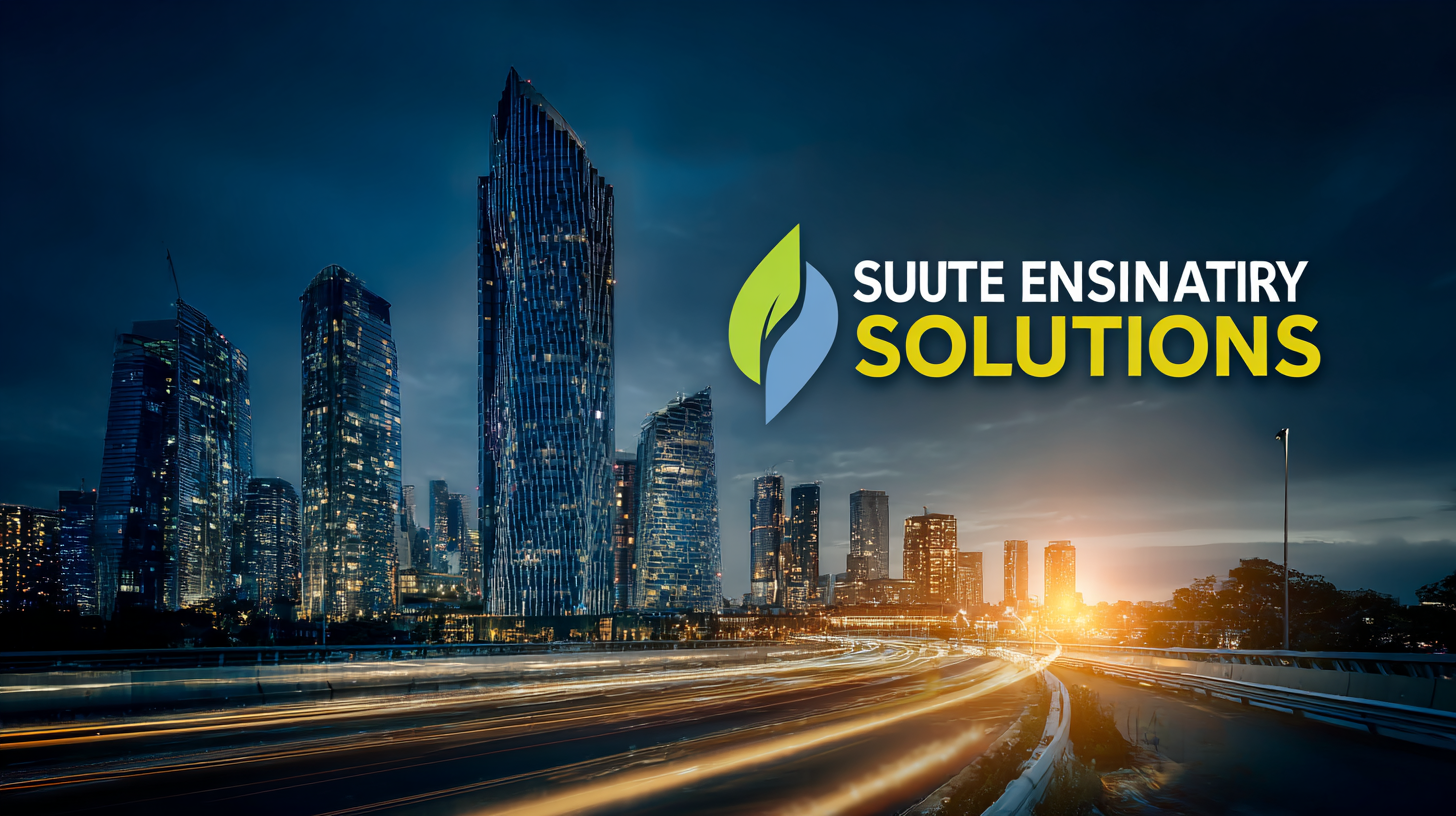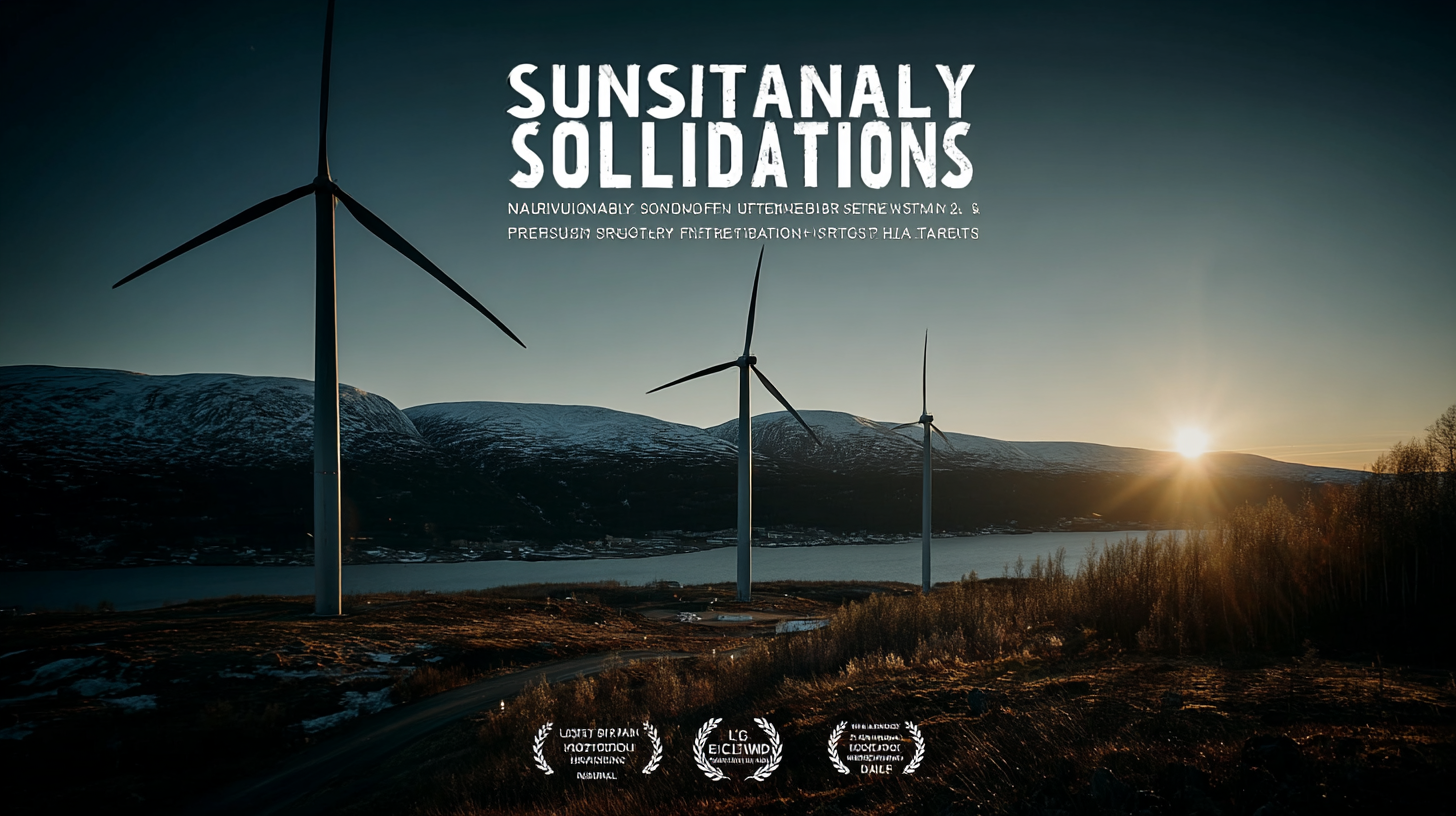
Blog
Navigating the Future of Best Sustainable Energy Solutions in 2025 with Practical How to Strategies
As we move towards 2025, the urgency for adopting sustainable energy solutions has never been greater. According to the International Energy Agency (IEA), sustainable energy sources, including solar, wind, and hydroelectric power, are projected to provide nearly 80% of the global electricity supply by 2030, a significant increase from just 26% in 2018. This shift is not only essential for reducing greenhouse gas emissions but also crucial for enhancing energy security and driving economic growth. Moreover, the market for renewable energy technologies is expected to reach $2.15 trillion by 2025, indicating a robust transition towards cleaner energy alternatives. In this blog, we will explore practical strategies for navigating the complexities of sustainable energy solutions, ensuring that individuals and businesses alike can successfully integrate these alternatives into their energy planning and consumption.

The Importance of Sustainable Energy Solutions: A 2025 Market Overview
As we approach 2025, the significance of sustainable energy solutions becomes increasingly evident in the global market. According to a recent report by the International Renewable Energy Agency (IRENA), the renewable energy sector is projected to create 24 million jobs worldwide by 2030, underscoring the rapid shift towards clean energy sources. This transition is primarily driven by the urgent need to mitigate climate change impacts and the growing demand for energy security. Markets for solar and wind energy are expected to grow substantially, with solar energy capacity alone anticipated to reach over 2,800 GW globally by 2025.
Furthermore, the shift towards sustainable energy is not just an environmental concern; it is also an economic imperative. A McKinsey report highlights that the global investment in renewable energy could reach $10 trillion by 2025, reflecting an undeniable trend towards sustainable practices. This investment not only supports technological advancements but also paves the way for innovative solutions that enhance energy efficiency and reduce reliance on fossil fuels. Businesses and governments alike must prioritize sustainable energy strategies to remain competitive and contribute to a more sustainable future.
Best Sustainable Energy Solutions Market Overview - 2025
Key Technologies Driving the Transition to Sustainable Energy by 2025
As we navigate through 2025, several key technologies are poised to drive the transition to sustainable energy. According to the International Energy Agency (IEA), renewable energy sources are expected to account for nearly 30% of the global energy mix by 2025, with solar and wind power leading the charge. Solar photovoltaics (PV) alone are projected to see an annual increase of 20% in capacity, making it not only a viable option but a cornerstone in the quest for a greener future.

In parallel, advancements in energy storage technologies will play a critical role in enhancing the reliability of renewable sources. A report from BloombergNEF indicates that the global battery storage market could reach a capacity of 1,000 GWh by 2025, a significant leap that would enable efficient energy management and mitigate the intermittent nature of solar and wind power. Moreover, the rise of smart grid technologies will facilitate better demand response and energy distribution, ensuring that sustainable energy solutions are both efficient and scalable. The synergy among these technologies is essential for creating a resilient energy ecosystem that supports our transition to sustainability.
Practical Strategies for Implementing Renewable Energy in Your Home
As we move toward 2025, implementing renewable energy solutions in our homes has become more vital than ever. According to the International Energy Agency (IEA), renewable energy is expected to account for nearly 30% of global electricity generation by 2025, presenting an opportunity for homeowners to contribute to this growing trend while reducing their carbon footprint. Exploring sustainable energy options such as solar panels, wind turbines, and geothermal systems can not only lead to significant savings on energy bills but also increase property value.
Tips: Start by conducting an energy audit to identify your home's energy consumption patterns and determine which renewable energy sources are most suitable. If solar panels are in your plans, consider that residential solar capacity is projected to grow by 15% annually through 2025, making it a strategic investment not only for energy savings but also for potential tax incentives and rebates.
In addition to traditional energy sources, consider integrating energy storage solutions, such as home batteries, which allow you to store surplus energy generated from renewable sources for later use. A report by BloombergNEF indicates that the global energy storage market could reach $620 billion by 2040, emphasizing the growing importance of energy independence in residential settings. Investing in these technologies now ensures that homeowners are well-prepared for the future, both economically and environmentally.

Evaluating Energy Efficiency: Metrics and Parameters for 2025 Solutions
As we approach 2025, evaluating energy efficiency becomes paramount in determining the best sustainable energy solutions. To effectively assess energy efficiency, it is essential to establish relevant metrics and parameters that provide a comprehensive understanding of performance. Key metrics such as energy savings percentage, payback period, and return on investment (ROI) can help businesses and consumers alike gauge the effectiveness of their energy strategies. Furthermore, incorporating real-time data analytics can facilitate informed decision-making, allowing stakeholders to optimize their energy consumption dynamically.
Incorporating parameters such as carbon footprint and energy intensity into efficiency evaluations offers a more holistic view of sustainability. For instance, measuring carbon emissions associated with energy production and consumption helps identify environmentally-friendly solutions. Additionally, the use of benchmarks and standards, such as LEED certification and ENERGY STAR ratings, can guide various sectors in adopting best practices. By focusing on these metrics and parameters, stakeholders can navigate the evolving landscape of sustainable energy, making informed choices that promote both economic and environmental benefits in 2025 and beyond.
Navigating the Future of Best Sustainable Energy Solutions in 2025 with Practical How to Strategies - Evaluating Energy Efficiency: Metrics and Parameters for 2025 Solutions
| Solution | Energy Source | Efficiency (%) | CO2 Reduction (tons/year) | Implementation Cost ($/kW) |
|---|---|---|---|---|
| Solar Photovoltaics | Solar | 18 | 1,000 | 3,000 |
| Wind Turbines | Wind | 45 | 2,500 | 4,000 |
| Energy Storage Systems | Battery | 90 | 800 | 5,500 |
| Geothermal Energy | Geothermal | 10 | 300 | 4,000 |
| Hydropower | Water | 40 | 2,200 | 3,800 |
Case Studies of Successful Sustainable Energy Projects: Lessons Learned and Best Practices
In recent years, the transition to sustainable energy has become increasingly vital as countries strive to meet global climate goals. Case studies from various successful sustainable energy projects illustrate the critical factors that contribute to effective implementation. For instance, a report by the International Renewable Energy Agency (IRENA) shows that investments in renewable energy sources like wind and solar are projected to exceed $2 trillion by 2025. These projects highlight the importance of integrating local communities in decision-making processes, which can lead to increased public support and enhanced project outcomes.
One standout example is Denmark's wind energy initiative, where a community-based ownership model has led to a 43% share of wind energy in the country's total electricity consumption by 2021. The lessons learned from Denmark emphasize the need for policy frameworks that support community involvement and financial incentives, ensuring that projects are economically viable while promoting local job creation.
Similarly, California's Solar Initiative demonstrated effective collaboration between state agencies and private companies, driving solar installations to achieve over 1.4 million residential units by 2023. These case studies underscore the necessity of collaborative strategies and innovative financing to foster the growth of sustainable energy solutions, positioning them as the linchpins for future energy landscapes.